Last weekend, from Thursday to Sunday, we drove to Northern Ireland, which is part of the United Kingdom.
First, a brief history of Northern Ireland. In colonial times, Ireland was ruled entirely by England. This didn’t sit well with the indigenous Irish folks, so in the early 20th century they rebelled, and in 1923, they signed a treaty with England, granting sovereignty to all but six of the Irish counties. The other six, in the north, still remain under British rule today. This forms the region known as Northern Ireland.
In the 60’s, 70’s and 80’s, Northern Ireland fell into a war that became known as The Troubles. The Troubles was the name given to the conflicts between the Protestant loyalists (immigrants from England who wanted to maintain the Queen’s rule) and the Catholic republicans (native Irish who wished for Northern Ireland to leave the UK and join the Republic of Ireland). The IRA fought a guerilla war against the British army, who was sent in to quell the revolutionaries. It was an extremely tense time; each side lived only amongst their own kind in cloistered societies, the British army would enact extremely harsh and inhuman punishments on the Republicans, and the IRA would respond by bombing anything that flew the Union Jack. It seems everyone lived in fear of the atrocities of the other side.
In the early 1990’s, The Troubles came to a close. The British army receded, and the IRA disarmed. After 30 years of conflict, cooler heads prevailed. Now both Loyalist and Republican live in peace, though no one forgot the atrocities of The Troubles.
It would be hard to forget The Troubles even if one wanted to. The cities in Northern Ireland positively bleed with signs of the hard times. Our first stop was Belfast, the largest city and the capital of Northern Ireland. It didn’t have the cheery storefront shops that the other places I’ve visited had. In fact, I have not seen so much razor wire since I crossed the Mexican border. There are fences everywhere, each topped with either barbed wire or steel spikes. The most famous walls in Belfast are the peace walls, which are massive metal and chain link fences that run through the center of the city, separating Catholic from Protestant. Many of the walls are spray painted in graffiti, most of them begging for peace.
The police station, in particular, personifies my view of Belfast. The old stone building is clearly visible. But tacked onto the front of the station is an extension made of cheap corrugated steel plate. There is an observation platform on the second story which bristles with cameras aligned to look down every street. The entire complex is surrounded by a high fence topped with razor wire. It’s a normal police station now, but it still bears the modifications made by the British.
The most unique thing about Northern Ireland are the public murals, which can be found commonly on the sides of many buildings in Belfast. Most of them refer to The Troubles, depicting graphic scenes of atrocities, or making a statement about the political stance of the inhabitants.
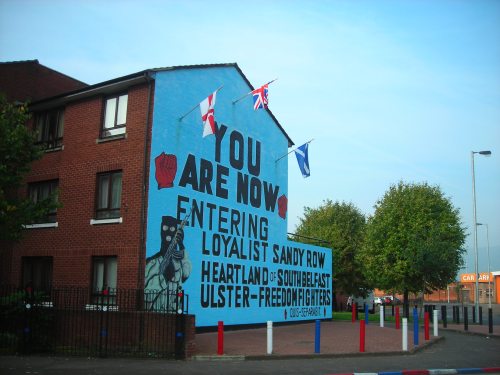
Sandy Row is an infamous Loyalist stronghold. They've even painted their sidewalks red, white, and blue to favor the British.
They’re impressive pieces of public art, and they serve as reminders of the high tension and conflict during the Troubles, and the deep seated prejudices that still exist today.
Despite these grim reminders, Belfast has a bright future. The main street and shopping areas are very modern, and quite impressive. And money is flowing into the city as investors take advantage of the peace and revitalized Irish economy. On the drive out, I counted 23 construction cranes in the city, building new buildings. In 10 years, if I were to come back to Belfast, I doubt I would recognize it. The walls will come down, the graffiti will be painted over, and the Troubles will be allowed to fade into memory.
We arrived in Belfast after making only one notable stop. Due to a bit of controversy, we had a new bus driver than the one who took us to Kerry. Seems the other one made a few improper comments to some of our womenfolk. Our tour director, Chuck, couldn’t have that, so he twisted the arm of the tour company to get us a new driver. They hired someone else especially for the job. The new guy actually looked a lot like Mr. Sir from the movie Holes. He took us to the Strokestown Estate, which is a large manor house that was lived in continuously from the 1700’s until 1972. Everything inside is the same as when it was sold in ’72. Unfortunately, the house was a bit of a disappointment after seeing the Muckross Estate. But the attached famine museum and the house gardens were very cool.
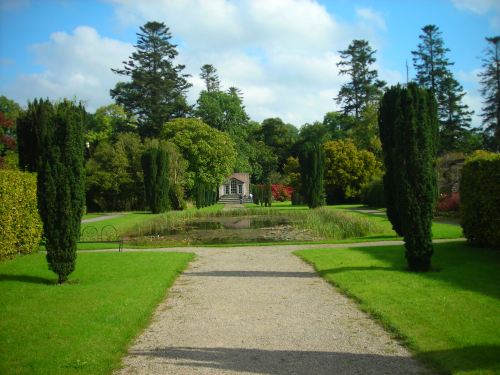
That little facade there in the background? That's actually a fake, built there for the purpose of photo ops.
After that, it was straight on to Belfast. We stayed in a nice international hostel, and in the morning we went on a tour of the city. One need attraction on the tour was the dockyards of Belfast, where the Titanic was built. Belfast used to be a shipbuilding capital, and for three years, the hulking shape of the Titanic rose up above the skyline as it was built. We got to see the dry dock where it was finally launched.
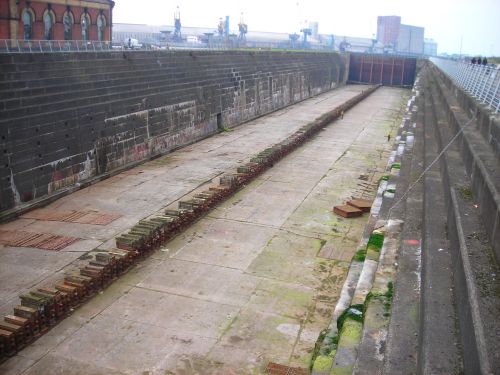
Fun fact: See that gate at the end of the dry dock? That is actually a registered ship. The gate floats when it allows another vessel in; therefore, it is a ship.
Unimpressed? We were. The Titanic was supposed to be big, and this was only a few dozen feet deep. If the Titanic could fit in this thing, it wasn’t much bigger than a barge. Then we saw and artist’s depiction of what the ship looked like, sitting in the dry dock.
Oh.
That night we had free time, so a large group went to the opera house to see The Jungle Book, in its first weekend at a major theater.
Unfortunately, it turned out to be a kid’s show. A little kid’s show. It would have been nice if that had been clearly stated on the poster. The admission staff must have been laughing behind their computer screens as they printed off our tickets. The music and dialogue were geared towards 7 year old kids. Because it wasn’t a Disney production, they didn’t even have “The Bare Necessities”. But once we resigned ourselves to the fact that it was a children’s show and there was nothing we could do about it, we made the best of it and laughed along. A high point came when a group of monkeys sang “Solja Boy”, changing the offensive rap lyrics to “Jungle Boy”. It ended up being a pretty enjoyable evening.
On Saturday, we drove to Derry. Derry is the second largest city in Northern Ireland, but we had some very important things to see before arriving there. One was the Carrick-a-Rede rope bridge. The other was the famous Giant’s Causeway.
The Carrick-a-Rede rope bridge is a bridge that was constructed by salmon fisherman on the Northern coast of Ireland every year to reach Carrick Island, where they could reach the best places to catch migrating salmon. Now it’s a tourist attraction with a gift shop near the parking lot. Nevertheless, it was still very scenic, and it had a 1km hike from the road to the bridge, which was a welcome opportunity to stretch our legs. Here’s the bridge.
It wasn’t nearly wobbly or unstable enough to suit my tastes, and it did not snap under my feet like in the movies. But it was still a good time.
Next we went to The Giant’s Causeway. The Giant’s Causeway is a famous formation of rocks on the northern shore of Ireland. All the stones on the Giant’s Causeway are arranged in tall columns, each one interlocking with the next in the shape of a hexagon. It looks like this.
There are two theories explaining how this could have come about. The one upheld by the scientists is that magma cooled in a valley under very controlled conditions, allowing it to crystallize into this shape. The local legend, though, is much more interesting.
A long time ago, there were two giants, the kind and hospitable Irish Giant, Finn MacCool, and the vicious Scottish Giant, Benandonner. They had something of a feud going on, so the Irish giant invited the Scottish Giant over to Ireland to settle things. Since the Irish Giant was so hospitable, he even built a causeway to Scotland from Ireland to help the Scottish Giant make the trip. But as Benandonner approached, the Irish Giant realized that his Scottish counterpart was even bigger than he was. So the crafty Finn McCool dressed himself in the clothes of a baby, and laid himself down in a crib. When the Benandonner approached, he saw the Finn in his crib and thought “If this is how large the child is, I don’t want to meet his father!” So the Scottish Giant ran, tearing apart the Giant’s Causeway as he fled so the Irish Giant could not pursue him.
The Causeway was very cool, but all too soon we had to get back on the bus and complete the trip to Derry.
Derry is a lot like Belfast in many ways. It suffered the same Troubles that Belfast did, and it bears the same powerful murals as the other city. But a river separates Catholic from Protestant in Derry, which means there were fewer walls and razor wire.
We got to our hostel (this time an Indian themed affair) and waited for our tour guide to show up to give us a walk around the city. He didn’t show. After a half hour, we were about to all go our separate ways, when a passerby said, “Oh, hey, I’ll give you a tour.”
So he did.
He introduced himself as Rory. Turns out, he’s a tour guide for another company. As he explained, “I probably know the guy who stood you up, so I’ll bail him out.” He gave a very interesting tour of the city, this offering an in depth look at the political side of The Troubles. Rory was unabashedly biased towards the Catholics, which was actually a very welcome change. Our other guide, in Belfast, was very careful to be neutral. Rory had no such restraint. This made him seem much more real, and much more interesting to listen to. About halfway through the tour, someone asked if he happened to know our Irish Catholicism professor, because she was also from Derry and they shared a surname. Without batting an eye he replied, “Oh, Jackie? Yeah, she’s my aunt. Small island, eh?”
There are no Peace Walls in Derry. There are, however, some other, much older walls. These are the original walls of the city, the most complete set of any Irish town. We walked along them during the tour.
Mass in Derry was very cool. For one thing, it had a sort of nostalgic feel to it for me, because St. Eugene’s Cathedral was a close replica of the old St. Michael Church. It was, of course, much bigger, but still very similar.
It was a very good mass, though once again, I noticed that the 9 of us there were the only ones in our age group. Everyone else was either much older or much younger. The priest noticed as well, because during the announcements at the end he said “It warms my heart to see young people come to mass in such large, great numbers.”
We chatted with the priest for a while, then headed back to the hostel. The next morning, we set off back to the Park Lodge. We would have two stops on the way back home; the first was St. Columbia’s Parish Church at Drumcliffe in County Sligo, the burial site of the famous Irish poet, W.B. Yeats. The second stop would be the Stone Age cemetery of Carrowmore, the largest burial site in Ireland.
Drumcliffe was very cool. It’s a small church, still in use today, hidden back among enormous trees and surrounded by an old cemetery. Yeats’ grave lies at the very edge of the graveyard, next to the church.
This ended up being one of my favorite stops. Its was refreshingly serene, after visiting the turbulent North, and it produced one of my favorite pictures of the trip.
A public sculpture outside was also very thought provoking. It’s Yeat’s famous poem, “He Wishes for the Cloth of Heaven”, written out on the ground, with a man crouching, contemplating the meaning. There’s a bench, as well, for you to sit and think, but there was little time for this. Next we went into the town of Sligo, to the Yeats society, where a Yeatsian scholar lectured about the poet’s life. It was dreadfully boring, but there were some neat exhibits there. I got to see a poem, written by Yeats’ own hand, which was very cool. I also feel better about my own chicken scratch handwriting, after trying to read it.
Sligo was also the site of my first experience with an Irish McDonalds. In Ireland, pretty much all businesses are closed on Sunday, so Mickey D’s was pretty much our only option. The verdict: quality was up to U.S.A. standards, but the price was not. I paid the equivalent of $8.28 USD for a quarter pounder with cheese meal. I can do better than that, even in Ireland.
The final attraction on the way home was Carrowmore, the largest Stone Age graveyard in Ireland. The stone age settlers of Ireland were fairly active builders. They built stone circles all over Ireland, where they would worship their pagan gods. And, when an important person died, they would sometimes build a megalithic tomb for him. A megalithic (mega meaning big, lithic meaning stone) tomb is basically a large pile of stones. Inside would be a dolmen, which is a large stone slab supported by five flat stones stood on end. Inside the dolmen would be the body (or bodies, megalithic tombs often held several.
There are a large number of dolmens and stone circles at Carrowmore, but unfortunately, this was the point in the tour when we were all quite tired. We’d been riding on the bus for a long time, and we wanted to get home. Furthermore, we didn’t have much time at Carrowmore, because we were running late. We hurried through the site, snapped some photos, read the information, and got back on the bus. There were a lot of ancient Neolithic graves there, but once you’ve seen one ancient Neolithic grave, you’ve seen them all.
We went to Galway with all possible speed (which was disgustingly slow, due to the narrow roads and construction projects which always shut the road down to one lane), went grocery shopping, and returned to the Park Lodge Hotel.
Our next trip is not until Saturday, when we go on a two day tour of Kilkenny. We’re all looking forward to a little relaxation now. These four day excursions are a lot of fun, but they wear on you after a while.
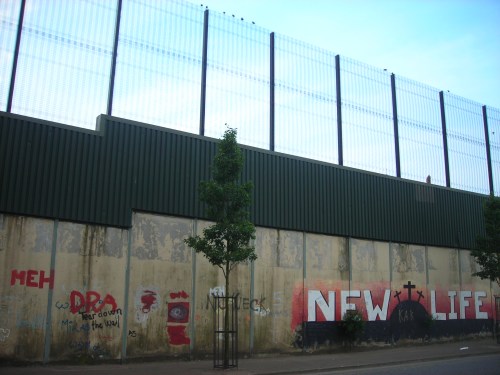
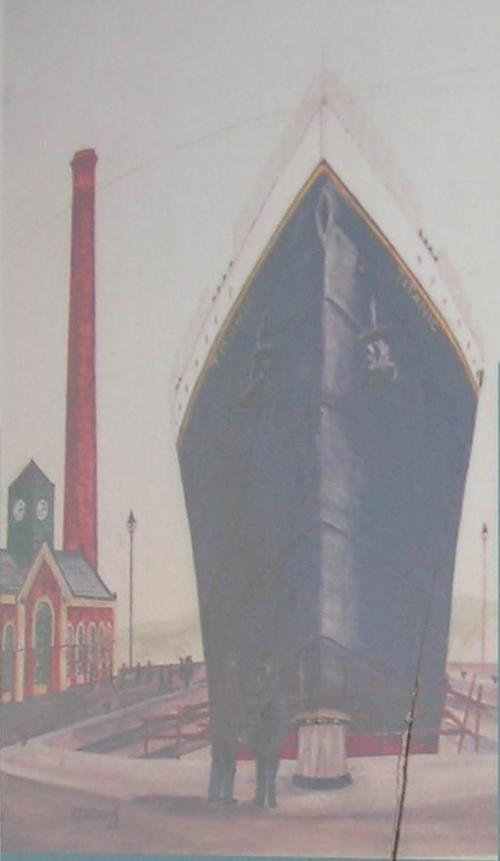
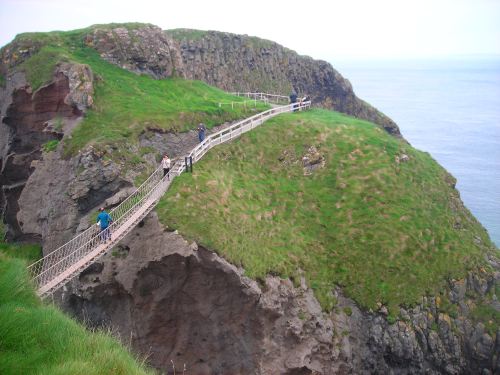

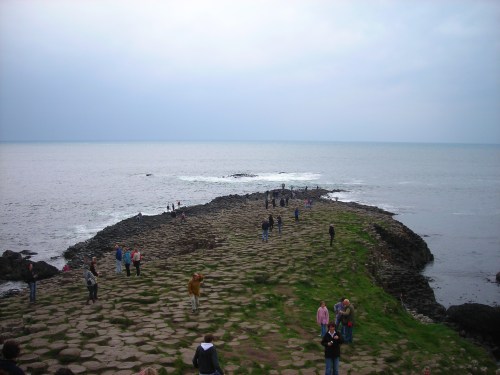
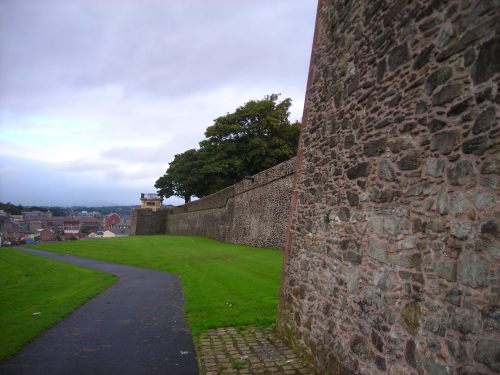
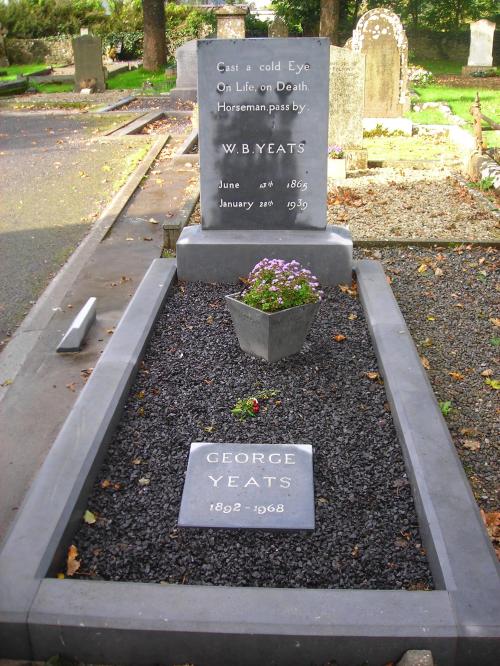
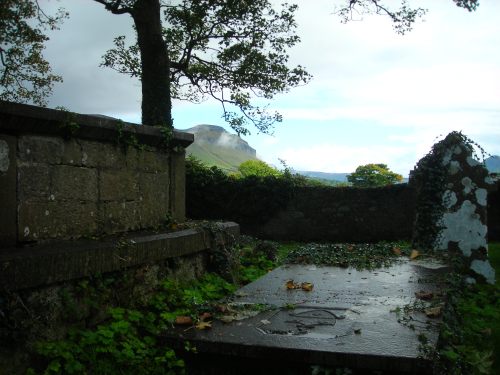
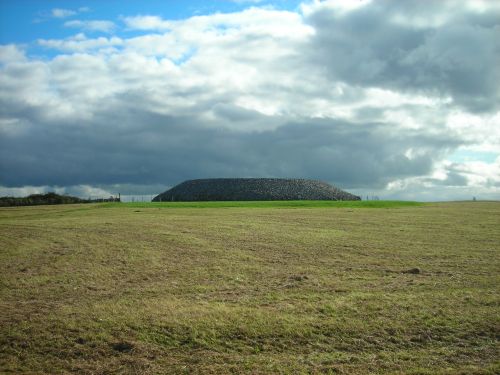
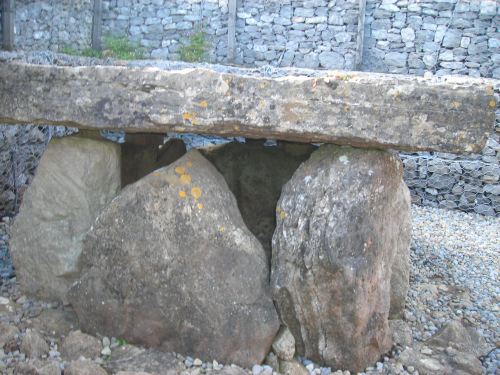
Hi! I’m the Community Manager of Ruba.com. We’re building a website to highlight some of the most interesting places travelers around the world have discovered. We’ve read hundreds of blogs about Ireland and we think that yours is awesome! We’d love to highlight excerpts from your blog (assuming it’s OK with you of course) and to discuss other ways of tapping into your expertise if you are interested. I’m at erin@ruba.com.
Thanks! 🙂
By: Erin on April 7, 2009
at 4:24 pm
I read a lot of interesting content here. Probably you spend a lot of time writing, i know how
to save you a lot of work, there is an online tool that creates high quality, SEO friendly
articles in seconds, just search in google – rewriter creates an unique article in a
minute
By: Isobel on October 9, 2014
at 11:25 pm